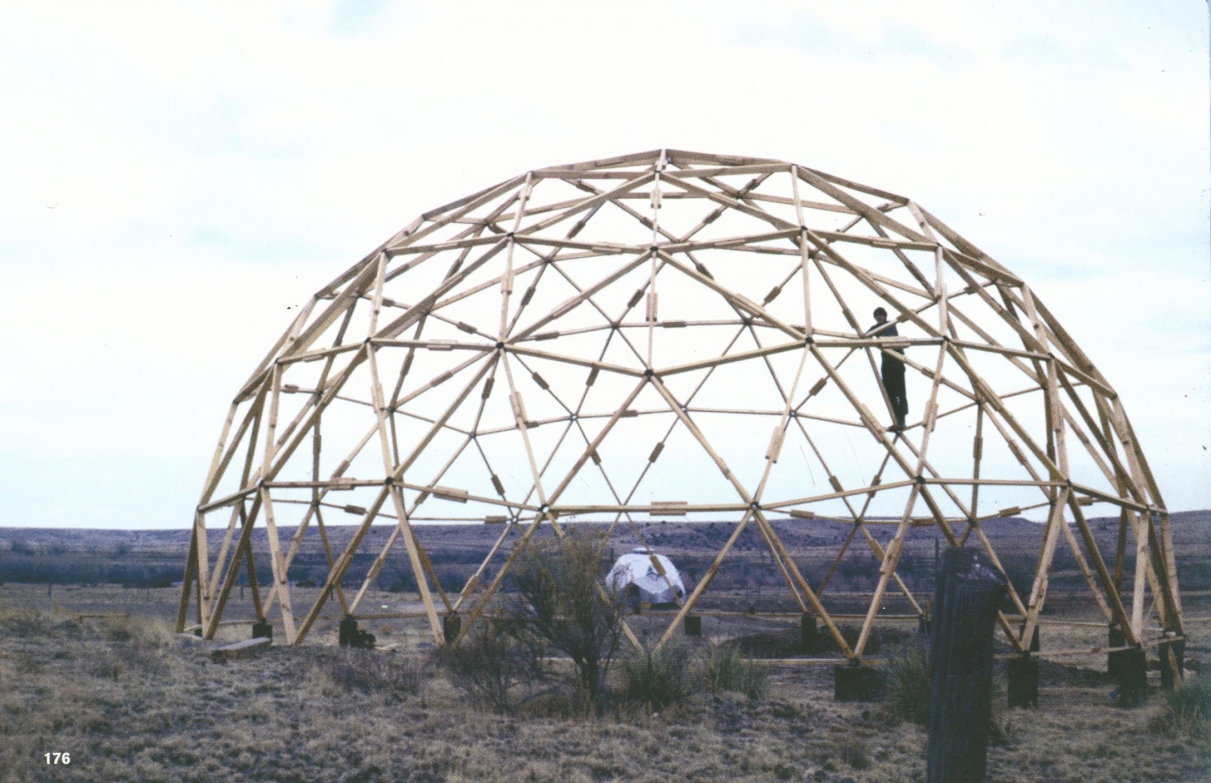Kayla F. Perez, Opposing Notions of the Built Escape in New Mexico: The Countercultural Utopian Commune and the Contrived Tourist Destination
Faculty Advisor: Prof. Beatriz Colomina
This thesis analyzes the development of two twentieth century escapisms that both established their architectural foundations from an American infatuation with the primitive nature of New Mexico’s landscape: the countercultural utopian commune and the contrived tourist destination. I begin by discussing the historical roots behind the necessity to establish these built escapes in the first place; for the New Mexican “destination,” building an escape was necessary as a way to remedy Santa Fe’s faltering economic situation upon finally gaining statehood in 1912. I focus my discussion on Fred Harvey, who—in tandem with the Atchison, Topeka, and Santa Fe Railroad and city of Santa Fe—determined to transform New Mexico’s primitive inhabitants and architecture into commodities that could be bought and sold to draw tourism into the region. Starting with the Atchison, Topeka, and Santa Fe Railroad’s entrance into New Mexico in the 1880s, Harvey created a complete tourist experience with his hotels, restaurants, “Indian Detours” tours that all found inspiration from the land’s primitive simplicity that was so attractive to Americans seeking an escape at the time.
Different than Harvey’s determination to generate a grid condition that would draw people to the capital and help New Mexico gain the attention that it never had with its reputation as a backward, Spanish- speaking region, the communards determined to flee the grid and create a new way of life away from America’s consumerism and waste that they so despised. In the late 1960s to early 1970s, rural communes exploded as “hippies” left the cities in search of a more-simple way of life. These people saw the Indian way of living off the land as an inspirational model and quickly assimilated these primitive traditions into their everyday lives. Contrasting with Harvey’s promotion of forms defined by consumption, leisure, and a romanticized image of New Mexico, the communards determined to adopt the Pueblo Indian communal lifestyle and construct forms of production, sustainability, and mysticism. Historian Timothy Miller notes that New Mexico became “a symbol of the entire rural countercultural impulse” by the late 1960s (Miller, “The 60s Communes: Hippies and Beyond,” Syracuse: Syracuse University Press, 1999, 63). Such a desire to return to a way of life that communards felt had been lost led to new architectural forms that became symbols for their renunciation of American society.
My thesis establishes a link between these two New Mexico escapisms that drew inspiration from a similar primitive source, though they held extremely opposing final goals and were years removed from one another. A further paradox also rose from the observation that despite their grievances against the mainstream, the ultimate outcome of the rural communes was their transformation into sensational points of public attraction through media attention. The thesis provides an articulation for these contradictions by defining and illustrating an architectural process of experimentation, code, and image; I define these to be sequential architectural steps in the evolution of New Mexico’s Harvey “destination” and communes. These architectural modes tie two seemingly distant escapes together by illuminating their similar fascination with New Mexico’s ancient culture, while also revealing the communes’ progression from countercultural retreats into types of “destinations.” Though each escape was divergent in the way they manipulated these architectural modes to fit their architectural purposes, I point out that the use of image proved to be comparable for both escapes—therefore leading to similar consequences in each case. As a result, Harvey achieved his commercial pursuits, while the commune eventually became commercialized by virtue of what happened throughout this architectural development.
Image citations:
"Santa Fe Art Museum." No copyright restrictions from Library of Congress.
"Taos Pueblo." No copyright restrictions from Library of Congress.
"Drop City Domes Exterior." Citation: “The patchwork domes of Drop City,” in Gordon, Alastair."Spaced Out: Radical Environments of the Psychedelic Sixties." New York: Rizzoli, 2008, 152.
"Drop City Dome Building." Citation: “Domes of Drop City,” in Gordon, Alastair. "Spaced Out: Radical Environments of the Psychedelic Sixties." New York: Rizzoli, 2008, 176.
"Indian Detours Ad." Citation: Indian Detours promotional brochure, circa 1930, in Berke, Arnold. Mary Colter: Architect of the Southwest. New York: Princeton Architectural Press, 2002, 151.
"La Fonda Santa Fe." Citation: La Fonda, circa 1932. Palace of the Governors Photo Archive, Santa Fe, New Mexico, digital collections.
"Zomeworks bus." Citation: “Baer’s Zomeworks bus at Manera Neuva commune, New Mexico,” in Gordon,Alastair."Spaced Out: Radical Environments of the Psychedelic Sixties." New York: Rizzoli, 2008, 186-187.






